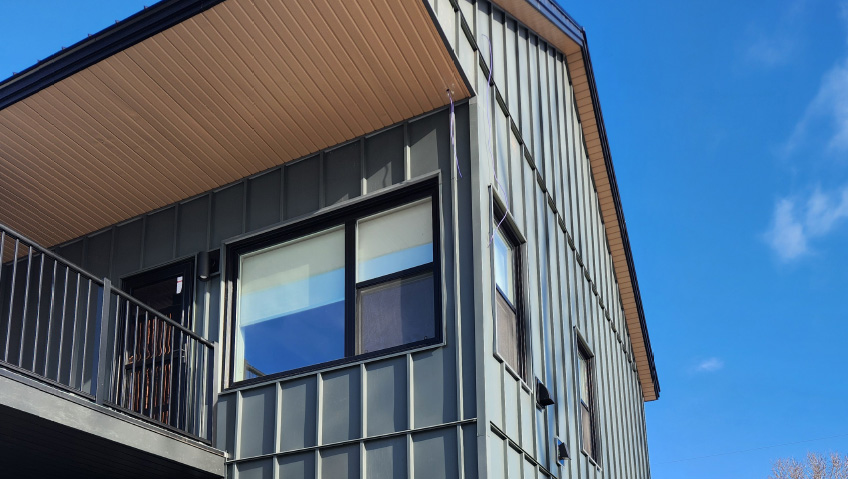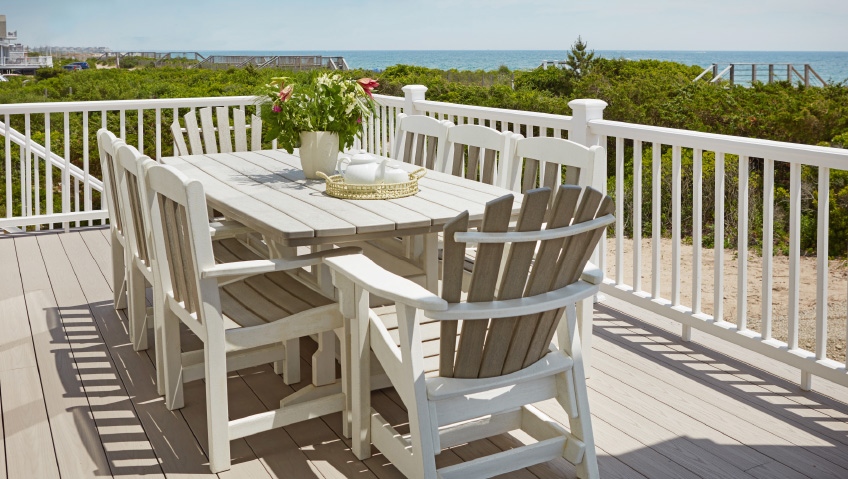As homeownership for many is moving further out of reach for many Americans due to a lack of affordable housing caused by ever increasing costs and lack of skilled labor, Fading West is successfully keeping the possibility of affordable homeownership alive for those living in mountain towns in Colorado and throughout the Western United States.
A fully integrated design, development, manufacturing, construction, and property management organization with a foundation in manufacturing concepts such as Lean processes, Fading West is re-imagining the construction process, building high-quality single-family homes in attached or detached styles or garden-style multi-family housing in a variety of floor layouts.
Founded in 2016 in Buena Vista, Colorado, the company debuted its cutting-edge 110,000-square-foot production facility in November 2021. This impressive facility is dedicated to modular manufacturing, fabricating high-quality homes, and cutting costs by up to 20 percent and timeframes by more than 50 percent compared to conventional construction.
“We started in my little community of Buena Vista of 3,000 people. In a small town you get to know everyone in the community and the lack of affordable housing was pushing out the workforce segment of our community,” says CEO Charlie Chupp.
“So firefighters, teachers, police officers, servers—this whole group of people were being pushed out of our community and it was having an effect not only on families and their lives, but also on the town itself.”
Chupp, who has a 20-year background in manufacturing, came together with a group of people to start looking at how affordable housing could be supported from a manufacturing standpoint.
“How do you build a home by streamlining the whole value stream from development to construction and incorporating offsite construction or modular construction into that?” he asks.
That’s where Fading West started, by focusing on creating high-quality, architecturally interesting homes that are affordable for the workforce segment. The company’s first big project in Buena Vista featured 150 homes that proved the business model.
“We started bringing in more of the workforce and getting some pretty aggressive price points,” he adds. “Then other communities told us they had the same problem; it wasn’t just a local problem, but a statewide and even a national problem.”
Starting as a development company, Fading West initially purchased homes from factories in Nebraska and used a local general contractor to finish them on site before starting its own construction division and building its own factory. Its vision for the future of housing is optimizing each of the major cost drivers in the whole process including development, on-site construction, and the off-site construction piece.
“We want to be a part of solving the U.S. housing crisis, and that’s a big part of why we handle all of these pieces, and how we put all these pieces together—to reduce costs and get families into home ownership,” Chupp says.
Not only are housing prices soaring, but according to the National Association of Homebuilders in the U.S., an estimated 41 percent of the U.S. construction workforce will be retiring by 2031, meaning there will also be less supply as well.
“But we’re not doing anything to increase the supply, so we have to start focusing on the supply side—how can we build more houses and start leveling the demand and supply?” Now Fading West is working closely with the Governor’s office in Colorado to increase the supply by getting government-subsidized workforce housing projects funded to lower the price and make them possible across the state.
Building smaller houses is a start. While there is still a market for large-lot detached homes, many homebuyers now in the workforce want a smaller home in a community setting so they don’t feel isolated. To that end, Fading West works to design communities with land planning initiatives that encourage relationships, such as big front porches and large common green spaces where people can gather, along with well-designed, very livable, and smaller-footprint townhomes.
“That’s a huge issue for communities to accept, that their zoning does not allow affordable housing,” Chupp says. “This is a meaningful mission to help communities and government and municipalities figure out how they can have great quality and architecturally interesting and beautiful homes that I would be proud to live in, and we can do that at an affordable price point.”
But this requires not only efficiencies through the manufacturing process but also zoning codes and entitlement processes. Without that, there will never be affordability for a whole segment of society.
“Our target has always been to build housing for someone making 80 percent of the area’s median income, which usually targets that workforce,” Chupp says. “That’s where our focus is. And then we work with municipalities when they want to bring subsidies to the development to drive at lower than 80 percent.”
Fading West also embraces the sustainability side of building, particularly when designing the most efficient two-bedroom, one-and-a-half bath townhome that can be designed to be livable and high-quality, but also optimized across the manufacturing process done in the factory, which represents about 90 to 95 percent of the total scope of work.
“When we think about design for manufacturability, a big part of that is material optimization and standardization,” Chupp explains. “We can get higher quality, more sustainable products and optimize them across multiple homes and projects so we’re driving waste out of the process. That’s what’s lowering our cost, but you’re not getting a cheaper product.”
While most estimates for waste at a typical construction site are that 30 percent or more of the product delivered is wasted or scrapped, Fading West is below six percent. With a statistic like that, why isn’t this type of build more popular?
“It’s a massive education process,” Chupp says. “Many people think modular is ‘manufactured,’ and manufactured housing in the U.S. is an HUD (Housing and Urban Development) code done to lower standards and isn’t the same quality; the building specifications aren’t the same,” he explains.
Fading West, however, produces a modular product which is an International Residential Code-built home, with the same specs as any site-built structure, requiring the same inspections as a site build, resulting in the same quality as—or better than—any site-built home.
Fortunately, both developers and buyers are becoming more open to the concept of modular housing, particularly when built properly. “We have a great relationship with the Colorado State Government,” Chupp says. “We talk to their staff daily, because we’re working with so many of their communities where we’re trying to help these local jurisdictions get funding and get projects done quickly.”
Fading West has built about 250 homes at its factory in the last 20 months, with 10 to 15 different projects in high-cost areas like Breckenridge, Telluride, Vail, and Gunnison (near Crested Butte). “When those projects are successful and those communities start talking about it, then that filters through all of their networks as well. So we’re seeing people change their minds,” says Chupp.
“We’re making a difference in these communities,” he says, which includes a recent partnership and the building of 16 homes with Habitat for Humanity Vail Valley.
“We’re not trying to build the cheapest modular box coming out of our factory; we’re trying to get the whole home to its lowest cost. We think about how we optimize what happens in our factory and what happens at our site.”
When things are very costly in a local area, Fading West will bring that tranche of work into the factory, which may make its modules cost a little more but will reduce the site work, speeding up the construction and the finishing.
“What makes us different is how we’re approaching this business. It’s not just our factory, it’s the whole cost of the project from beginning to end, what the home buyer pays at the end,” Chupp says. “We also approach modular construction from a manufacturing perspective.”
Chupp’s background in manufacturing has also made Lean production part of Fading West’s mandate: what does the customer value and how do you maximize value to a customer through a process that minimizes waste?
When Fading West designs its products and processes in its factory and thinks about design, it’s always thinking Lean. While a lot of factories are built by construction companies that take construction and put it under a roof, that’s not manufacturing, that’s just construction under a roof, says Chupp. Manufacturing is a much more complex, streamlined thought process, and it’s a very different approach.
“Our mission is to see families, who would never otherwise, walk through a home see that they’re going to get something that’s well built, that they can be proud of. It’s a powerful thing to see that happen. It’s why Fading West exists,” he says.
“We’re not here to be a modular homebuilder; we’re not here to be a GC. We’re here to figure out how to streamline and remove waste and reduce costs so that families that would never otherwise own a home can walk into one of their own. That feels like a great accomplishment and it’s something our team is super proud of.”






